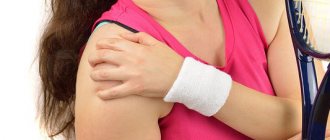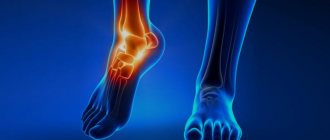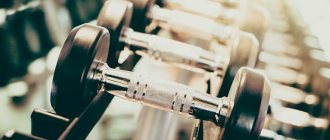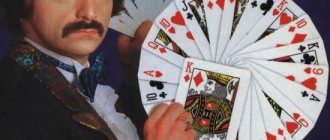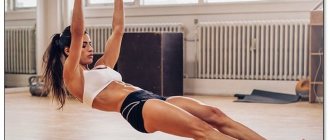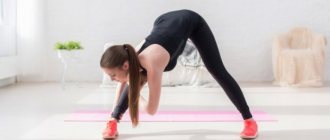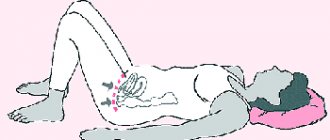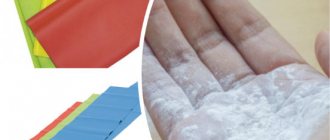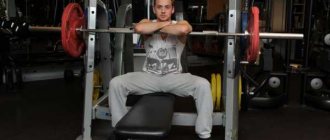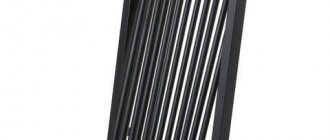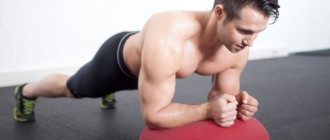Functions and structure of the shoulder joint
The shoulder joint, formed by the socket of the scapula and the head of the humerus, is surrounded by muscles, ligaments and tendons, and has a spherical shape. Thanks to this anatomical structure, movements in it are made along three axes. These are movements back, forward and in a circle. The shoulder joint accounts for the bulk of daily physical activity, so traumatic injuries and inflammatory diseases are common.
The ligaments that connect the muscles to the joint are not very large, but tough. This is a negative feature of the ligamentous apparatus, due to its inability to stretch, often leading to injuries during heavy physical exertion. It is the constant daily loads on the shoulder girdle, combined with a sedentary lifestyle, that provoke the development of various inflammatory processes in the joint area.
The most common pathologies in the shoulder girdle of the skeletal system are:
- injuries - dislocations, subluxations, fractures in the neck of the humerus;
- congenital dysplasia or underdevelopment of the shoulder joint;
- degenerative processes characterized by changes in the area of cartilage tissue, when they become thinner due to injuries, metabolic disorders, and insufficient nutrition of tissues in the joint area. With this pathology, arthrosis develops;
- inflammatory phenomena in the area of the cartilage tissue of the joint or arthritis, developing against the background of injury or infection, leading to progression of the disease in the absence of treatment.
Recovery time
There are no clearly defined time frames for the complete restoration of the functionality of the joint and nearby locations after injuries or other pathologies in the relevant area, since this process depends on a number of factors - both external and internal.
In general, a specialized specialist, monitoring the patient’s condition during the rehabilitation period, can indicate a possible date of discharge while maintaining the current positive dynamics of recovery.
Possible deadlines:
- Light minor damage. On average, treatment lasts up to 2 weeks;
- Pathologies of moderate severity. From 2 to 6 weeks;
- Acute severe injuries with the development of complications, as well as chronic generative-dystrophic processes in the corresponding localization. The estimated treatment time ranges from 8 to 20 weeks.
Reasons that most often lead to injury
All age groups of people, both adults and children, suffer injuries to the shoulder joint. The most common causes leading to traumatic joint damage are:
- heavy physical activity – there is a partial rupture of the ligamentous apparatus, which occurs mainly in athletes;
- age-related changes due to metabolic disorders - a decrease in the elasticity of the tissue of the shoulder joint, leading to tearing of the ligaments;
- the formation of osteophytes - bone processes that arise as a result of metabolic processes in the body;
- heavy physical labor - constant tension of the muscular and ligamentous apparatus leads to joint fatigue, which provokes tears and sprains;
- falling onto outstretched straight arms;
- a sharp blow to the shoulder;
- sudden movements or strong abduction of the hand.
Read also….
Celebrex for back pain Any injury is always accompanied by severe pain. This condition requires mandatory treatment, both medicinal and physical.
https://youtu.be/EqRHosopZKw
After removing the plaster
Now gymnastics for a fractured shoulder joint can already be more serious. The following set of exercises will help:
- Breathing exercises. It is based on reducing the inhalation time and increasing the exhalation time. This saturates the blood with oxygen, activates the lungs and increases their volume, and is also a good sedentary warm-up.
- Active movements (flexion/extension, circular rotation) in the elbow and wrist joints. This helps reduce swelling, stimulates circulation, and also prevents blood clots.
- Hand movements like a pendulum. The exercise is performed standing, feet shoulder-width apart, torso slightly tilted forward. Both limbs should be completely relaxed.
- Crossing your arms in front of your chest. They shouldn't be harsh.
- Hold your hand suspended for 10 seconds. Surprisingly, many patients do not succeed in this simple exercise right away. This indicates significant muscle weakness.
- Rolling the ball on the table, as well as on a vertical surface (wall).
- Clap in front of the chest and then behind the back. For some patients, this exercise cannot be performed correctly in the first days after removing the cast - the arms simply do not meet behind the back. Due to prolonged fixation of the joint, its capabilities have decreased and the range of motion has decreased. Over time, it will become easier and easier to do.
- Rotations of the torso, while the arms are fastened in front like a castle. This will help improve the turning ability of the entire body, which also suffered from a long period of forced downtime.
Each exercise should be performed 15 times. When the muscles are sufficiently strengthened, you can strengthen this complex of exercise therapy for a fracture of the humerus with light weight gymnastic dumbbells, but this should not happen earlier than a month and a half after removing the plaster cast.
Carrying out gymnastics under the supervision of a physical education specialist is considered the preferred option. As a rule, such a “close consultation” is required only for the first time, and then the patient independently performs the exercises at home. The exception is the appearance of contractures, and then you should constantly visit a medical facility to perform exercises.
Read also: Gymnastics for arthrosis of the hip joint
Difficulty arises when performing exercises and moving the limbs (flexion/extension/adduction/abduction) are difficult to perform. Most likely, the injury caused contractures. Such patients need to undergo a complex of physical therapy (physical therapy) only under the supervision of a specialist, in a medical institution. When trying to perform exercises through force, pressure, or internal interference, the situation may be complicated by abrasion of the ribs of the bones, which will subsequently lead to arthrosis or arthritis.
Among the nuances of these types of injuries, the following is noted. If the patient is right-handed and has an injury to his right arm, then recovery will take less time than in the case of a fracture of the left arm. The fact is that a person automatically tries to load the hand that is working for him, and forgets about the other. For a left-handed person, the problem is the restoration of his right hand, since in ordinary life he uses it little.
It is very good if the patient can visit the pool. The density of water allows you to gently increase the load during movements, but at the same time injuries during swimming are practically excluded. But the pool is only recommended for those people who have achieved a good range of shoulder movements.
The need to perform gymnastics for the shoulder joint
Special gymnastics, for any pathology of the shoulder joint, must be carried out under the supervision of a specialist. Therapeutic exercises for the shoulder joints, correctly selected, help inhibit the inflammatory process and its progression.
The positive effect of exercise therapy on pathological processes in the shoulder joint is as follows:
- active movements in the joint increase and are restored;
- tissue nutrition in the affected area improves;
- muscle tone is restored;
- strengthening the ligamentous apparatus of the joint;
- the range of motion in the joint is restored to its original level;
- the development of inflammatory and degenerative processes in the joint tissues is stopped, and the pain syndrome accompanying the disease is relieved.
Gymnastics and physical therapy: what are the benefits?
Performing certain movements during gymnastics has a positive effect on the individual’s body:
- range of motion is restored;
- residual effects of the inflammatory-degenerative process are stopped;
- tissue nutrition is restored;
- microcirculation and blood circulation processes improve in the affected area;
- relieves tension from muscles and tendons;
- ligamentous structures are strengthened;
- muscle tone is gradually restored.
Contraindications to therapeutic exercises
The beginning of exercise therapy should be recommended by the attending physician after the acute symptoms of the disease have subsided, since there are a number of reasons why training to perform gymnastic exercises is contraindicated:
- acute pain syndrome;
- chronic pulmonary and heart failure;
- fever accompanied by an increase in temperature above 37.2 degrees;
- hypertension with frequent crises;
- frequent bleeding (nasal, uterine, hemorrhoids);
- severe deficiency in diseases of internal organs;
- acute infectious diseases.
In each case, an individual approach is carried out, since there are temporary contraindications, when after the manifestations of any pathology have been removed, classes can be resumed.
Exercise for a fracture
Therapeutic exercises for fractures in the shoulder area are divided into 2 successive stages: before removing the fixation splint and after its removal. The first classes begin 2–3 days after the injury.
Before removing the cast, rehabilitation specialists recommend that the patient make smooth rocking movements with his arm in a sling, move his fingers, lightly press his shoulder to his body and relax it. These manipulations are a good prevention of congestion and prepare the patient for the main complex of exercise therapy.
- Exercises for the shoulder joint Treatment of SHOULDER PAIN Shoulder Pain Exercise Guide
Exercises for developing the shoulder joint after injury:
- Clench your fingers into a fist for 3 seconds, then unclench them. Do 20–30 repetitions. This exercise maintains muscle tone in the hand and forearm.
- Lying on your back, place a small pillow under your shoulder arm. Bend and straighten your arm at the forearm. The number of repetitions is from 10 to 15 times.
- Lying on your back and holding your injured arm by the wrist with your healthy hand, pull it up to eye level and hold in this position for 10–15 seconds. Lower your hand. This movement may normally cause mild discomfort.
Exercise therapy complex recommended after a period of immobilization:
- Exercise 1
Exercise "pendulum". While standing, the body is slightly tilted forward, the healthy arm rests on a table or couch. Having freed the sore arm from the sling and hanging it down, do careful pendulum-like or circular swings. The muscles of the arm and shoulder should be relaxed as much as possible.
- Leaning forward slightly, rest your hand freed from the sling on the back of the chair. Taking a step back, lightly press on the back of the chair for 10–15 seconds. When pressing, you will feel a slight tension in the muscles of the back of the forearm and shoulder. Repeat 10–15 times.
- Exercise 3
Exercise "frame". Clasping your hands, raise them, resting your hands on the top of your head. From the same position you can move your elbows back and forth.
- Bend your elbows and touch the shoulder joint with your fingers. Bring your elbows towards the center.
- Standing facing the wall, press your injured arm against it at chest level. Taking small steps with your fingers along the wall, gradually move your hand up and stay in this position for 10–15 seconds.
- Lying on your back, hold onto the stick with both hands. Bend your elbows and raise the stick to chest level.
Perform 7–10 repetitions of each gymnastics exercise.
Set of exercises
On the recommendation of a doctor, a patient with a disease of the shoulder joint is referred to a specialist who, on an individual basis, selects a set of exercises for the shoulders, including:
- development of the shoulder joint;
- development of joint flexibility;
- strengthening the muscles of the shoulder joint.
Mild pain is not a contraindication for the following exercises:
- “Hug yourself” exercise - feet shoulder-width apart. When hugging yourself with your arms, you need to reach your spine as close as possible;
- bends - feet shoulder-width apart, hands on the back of the chair. Slowly and carefully, the shoulders lower to the floor and return to their original position;
- reach your knees with your elbows - feet shoulder-width apart, arms bent at the elbows. Leaning forward, reach the opposite knee with your elbow;
- the hands are clasped behind the back in a lock - the legs are shoulder-width apart. Slowly and carefully, the arms are raised up and then lowered;
- lying on your back, outstretched arms rise and fall.
When performing a complex of therapeutic exercises, it is necessary to alternate them with breathing exercises. The flow of oxygen increases microcirculation in the problem area, which promotes better tissue regeneration and relief of the inflammatory process.
Author's methods
The methods of Evdokimenko and Bubnovsky are especially popular. Dr. Gitt’s theory of micromovements is very interesting for patients with advanced forms of arthrosis - you can exercise all day long, without any pain.
Exercises by Evdokimenko
Dr. Evdokimenko developed his own system. By practicing it, you can already feel significant relief after the first lesson:
- Sitting. Raise your healthy hand, clasp your head with it, placing your palm on the ear on the opposite side. Begin to tilt your head in the direction opposite to the sore shoulder. Feel the muscle tension. Make an effort to return your head to its normal position. Stay in this position for 5-7 seconds. Then relax and pull your head a little more away from the sore shoulder. Try again to return to normal position. And repeat the sequence of actions again (maximum 5 repetitions).
- Sitting. Place the palm of the affected hand on the opposite shoulder. Use your healthy hand to support the patient's elbow. Start trying to place your hand behind your shoulder, pushing your sore arm under your elbow. Slight pain is allowed when performing the exercise. Now strain your sore arm, trying to lower it along your body. At the same time, the healthy hand continues to push the patient’s elbow. Remember the feeling. Stay in this position for 5-7 seconds. Repeat the sequence of actions - place your palm behind your shoulder a little more, try to lower your hand along your body, without letting it go with your other hand, which rests on the elbow (maximum 5 repetitions of the sequence).
See the video below for the entire set of shoulder exercises according to Evdokimenko.
https://youtu.be/NydmSvbOS5o
Bubnovsky's exercises
The doctor invented special simulators that can be used to restore mobility to the shoulder joint. Bubnovsky’s main message is that limited mobility is associated with muscle spasms. The latter compress the shoulder joint like a vice. Blood circulation deteriorates, and the destruction of hyaline cartilage occurs at an accelerated pace.
It is clear that not everyone can purchase such a simulator, but you can easily come up with a replacement for it - an expander. Every day, through pain, perform the following set of physical exercises (you will need four expanders so as not to bother with fixing one at different levels):
- Secure the expander at the baseboard level. Wrap it around your hand on the side where the shoulder hurts, and imitate sawing wood - put your leg forward on the opposite side, rest your healthy hand on your thigh, with the patient, move forward/backward, stretching and releasing the expander. At the moment of tension on the sports equipment, exhale noisily and make a loud “Ha” sound.
- Secure the expander at waist level. Repeat the steps from the previous paragraph.
- Secure the expander closer to the ceiling. Pull it towards you, trying to press your hand to your chest.
- Take the expander with both hands and step on it in the center with your foot. Alternately raise your arms up and lower them down. Accompany each rise with a noisy exhalation and the sound “Ha.”
How to develop a shoulder if it hurts, see the video below.
https://youtu.be/r5Z0QOR6YsI
Gitta Exercises
Vitaly Gitt is a chiropractor. His method of treating arthrosis of the shoulder joint is suitable for people with minimal physical training and even bedridden patients. who can rise and sit in bed.
The whole point is in micro-movements, which by definition cannot cause pain. Such exercises can be performed both in the stage of remission and during exacerbations, at 1st degree of pathology and at 3rd.
The complex (performed sitting on a chair) consists of only two simple but effective exercises:
- Place your hands on your knees (or thighs). Perform synchronized swings with your elbows with a small amplitude. Number of repetitions until you get bored.
- The initial pose is the same as in exercise 1. Raise and lower your shoulders - up / down. Do it for as long as you have patience.
See how you can independently diagnose shoulder arthrosis and what exercises to perform in the video below.
Some asanas allow you to develop your shoulder joints well and regain, if not your former activity, then the ability to take care of yourself normally and not cry out in pain every time you try to put on a T-shirt or comb your hair. There are practically no specific asanas for shoulders. However, there are many poses in yoga that involve the shoulder girdle.
- Dandasana or wall push-ups. Stand at arm's length from the wall. Spread your legs a little. Place your palms against the wall. Slowly approach the surface and then push off from it. Don't take your palms off the wall. Number of repetitions - start with 5 times, then more. Ideally, you should feel some fatigue after this asana. Contraindication: arthritis of the hands.
- Shalabhasana (one of the options). Stand with your back straight, feet shoulder-width apart, feet parallel to each other, hands clasped behind your back. As you inhale, expand your chest - your collarbones should be in one line. Pull your shoulders back forcefully and try to break the lock. Breathe deeply and deeply at this moment. After a few breathing cycles, relax.
For more yoga shoulder exercises, watch the video below.
https://youtu.be/uFgD9WrL9LI
Rules for performing exercises and preparing for classes
Before starting therapeutic exercises, certain preparation and compliance with requirements are necessary, which include the following provisions:
- regularity in classes is the most important point;
- light load on the joint, in the form of light exercises, gradually moving to more complex activities;
- gradual introduction of various sports equipment into the set of exercises, such as a stick, dumbbells, expander;
- It is advisable to carry out the treatment complex several times a day, but no later than three to four hours before bedtime;
- It is necessary to complete the gymnastics with exercises aimed at relaxing the body muscles.
Read also…. Massage of the cervical-collar area
By adhering to these rules, you can significantly improve your overall condition and quality of life.
General requirements
Before you start a complex of therapeutic exercises for the shoulder joint, you should familiarize yourself with some rules:
- Begin a set of exercises from a supine position.
- First of all, with glenohumeral periarthritis, exercises should involve the joints of the upper limb distant from the shoulder.
- With the help of massage before performing gymnastics, you can reduce the limited range of motion in the shoulder.
- Pain syndrome of low intensity that occurs during exercise is not a reason to refuse therapeutic exercises. It can be relieved by taking medications that have an analgesic effect.
- The intensity of the loads performed is increased gradually.
- The introduction of special sports equipment into the set of exercises, such as a gymnastic stick, ribbon, dumbbells, and a ball, will help achieve good results.
To obtain a lasting effect from therapeutic exercises, it is recommended to do it regularly.
Treatment of shoulder joints with gymnastics
One of the common diseases of the shoulder joint is dislocation, which is observed due to weakness of the ligamentous apparatus and reduced muscle activity. The pain syndrome that accompanies this pathology limits activity in the joint. Exercises and rehabilitation for shoulder dislocation will help strengthen the muscle frame, relieve swelling and pain.
It is advisable to do gymnastics when the shoulder joint is dislocated in a lying or sitting position, since in this case the compression load on the joints is relieved. The treatment complex includes the following stages of joint development:
- certain movements in the joint, accompanied by alternate contraction and relaxation of muscles;
- muscle stretching movements;
- meditation aimed at complete relaxation.
In some cases, after a shoulder injury, due to weakening of the ligamentous apparatus of the joint or a defect in the head of the humerus, a habitual dislocation of the shoulder occurs. It develops with a normal range of motion and is accompanied by severe pain and a sharp limitation in movement.
With habitual shoulder dislocation, exercises to strengthen the muscles of the shoulder girdle, supplemented by a course of massage, have a positive effect. For this pathology, a special course of exercise therapy has been developed, which is carried out under the supervision of a specialist.
Physical therapy after a shoulder fracture
Rehabilitation after a fracture of the humerus takes a lot of time. Such injuries are considered very serious, especially if they occur with displacement of the humerus or are accompanied by rupture of cartilage and ligaments.
Unfortunately, complete restoration of the functioning of the joint cannot always be achieved. After the bones of the joint have fused and fixation of this joint is no longer needed, the patient needs to develop this area. What exercises can and should be done after a shoulder fracture?
Exercises for arthrosis
This pathology develops in the cartilage tissue of the joint due to metabolic disorders and is accompanied by severe pain. The disease often appears during heavy physical exertion on the shoulder girdle. The main goal of treating arthrosis is to relieve pain and restore normal function of cartilage tissue.
Therapeutic exercises and massage of the shoulder girdle are the most basic activities carried out in the treatment of arthrosis. The main thing in the treatment of this pathological process is the regularity of the treatment complex and gentle loads on the joint.
Gymnastics using the Bubnovsky method, aimed at restoring active movements in the joint and relieving pain, gives a good effect in treatment. The exercises are easy to perform and can be done at home. Before gymnastics, a short warm-up is performed in a lying position, followed by a complex of exercise therapy:
- raise your arms up, spread them to the side and put them under your head;
- all exercises are done while exhaling with complete relaxation of the muscular frame of the thoracic region;
- in a sitting or standing position, dumbbells are lifted in front of you, the weight of which is from one to four kilograms. In each case, sports equipment of a certain weight is selected individually;
- sitting and stretching your arms forward with dumbbells, spread them to the sides. The exercise is repeated up to 20 times.
Read also…. Heel pain when stepping
Bubnovsky’s methodological developments have several options, so before starting classes using his method, a doctor’s consultation is necessary.
5 minute daily warm up
Do the exercises while standing, with your feet shoulder-width apart and your palms on your waist:
- Stretch your left shoulder, joint and forearm with your right hand, and your right with your left hand. The movements should be soft, but at the same time quite noticeable. This will warm up your muscles and prepare them for the next exercise.
- Raise your shoulders one by one from the starting position. Do this slowly - there should be no unpleasant sensations. Alternate between raising/lowering both shoulders at the same time.
- Perform circular movements with your shoulders - simultaneously backward (at least 5 times), then forward. Now do the same, but alternately - turn back first your right shoulder, then your left (at least 5 times). Now do the same, but forward.
- From the starting position, move both shoulders back simultaneously, trying to touch your shoulder blades. Hold for 5 seconds. Return to the starting position and repeat at least 5 times.
- An exercise similar to the previous one, but performed a little differently. From the starting position, move back first one shoulder, then the other - feel how the shoulder blades touch. In reverse order, return your shoulders to their original position. Number of repetitions – at least 5 times.
Read also: Exercises for the shoulder joint
Note. Perform the described complex several times a day. Physical education can be done at home, at work, and even in nature - your efficiency will only increase.
The benefits of gymnastics for shoulder arthrosis are difficult to overestimate. Thanks to improved blood circulation, the joints begin to receive more nutrients, and the quality of synovial fluid improves. All this together gives impetus to the beginning of regenerative processes. The doctor decides on the advisability of classes. He also selects an individual complex.
You may also be interested in these FREE resources:
- Proper nutrition for the health of the spine and joints: 10 essential nutritional components for a healthy spine
- Are you worried about osteochondrosis? We recommend that you familiarize yourself with these effective methods of treating osteochondrosis of the cervical, thoracic and lumbar regions without drugs.
- Are you haunted by pain caused by arthrosis of the knee or hip joints? The free book “Step-by-step plan for restoring mobility of the knee and hip joints with arthrosis” will help you cope with the disease at home, without hospitals or medications.
- Free books: “TOP 7 harmful exercises for morning exercises that you should avoid” and “7 main mistakes in a beginner’s fitness training at home and in the gym” - after reading these books, you will learn how the features of constructing workouts for beginners differ according to compared to training for people who have been involved in fitness for a long time.
- Free unique training course “Secrets of the treatment of lumbar osteochondrosis” from a certified exercise therapy doctor who has developed a unique system for restoring all parts of the spine, which has already helped more than 2000 clients!
- Watch this video for simple techniques for relieving acute pain when the sciatic nerve is pinched.
Exercise for Chronic Diseases
Chronic pathology, in the form of glenohumeral periarthritis, is a common disease in the middle and older generation. The inflammatory process affects the periarticular tissues of large joints. Common causes are osteochondrosis of the cervical spine, traumatic injury to the shoulder girdle, and increased loads.
Complex treatment using exercise therapy and physiotherapy gives a pronounced effect in relieving clinical symptoms. Popov’s therapeutic exercises, which are performed in the morning, are recognized as the best method for treating glenohumeral periarthritis. Exercises are repeated up to ten times:
- sitting on the edge of a chair and placing your feet apart, you walk in place, while your hands slide down your thighs;
- smooth and slow movements of the shoulder girdle. Bending and unbending, the movements are repeated;
- with arms extended in front of you, shoulder movements are made in the form of a figure eight;
- When inhaling, move your shoulders forward, when exhaling, cross your arms over your chest;
- circular movements with elbows;
- feet shoulder width apart. Leaning forward, reach your feet facing inward. When straightening, bring your shoulder blades together, while your feet are turned outward;
- hands lie on the shoulders, elbows stretch upward;
- As you inhale, raise your arms up, and as you exhale, lower them.
All exercises are performed while sitting. This technique allows you to successfully cope with the disease of the joints of the shoulder girdle and develop the activity of movements of the affected organ.
Rehabilitation for this pathology always takes a long time. But strict adherence to all medical recommendations and regular exercise therapy exercises have a positive effect.
Humeroscapular periarthritis
With this pathology, the inflammatory process covers the periarticular tissues of large joints (capsules, ligaments, as well as tendons and muscles that surround them). Middle-aged or elderly people are most susceptible to this disease.
The causes of the disease are heavy loads, hypothermia, cervical osteochondrosis or injury. When treating periarthritis of the shoulder joint, gymnastics with a properly selected set of exercises, when performed regularly, will bring positive results. However, it should be remembered that these therapeutic measures are carried out in the remission stage of the disease.
Combining exercise therapy with other treatment methods
Any diseases of the skeletal system are long-term. Therefore, treatment of joint pathology includes all methods of treating the pathological process, which are carried out in courses. Therapeutic exercises and massage of the shoulder joint are complemented by the appointment of physiotherapeutic procedures, such as:
- magnetic therapy;
- electrophoresis;
- mud applications on the joint area;
- radon baths;
- ultrasound.
Carrying out complex treatment gives good results not only in relation to the patient’s ability to work, but also in his quality of life.
Treatment and rehabilitation after ruptured shoulder ligaments
Immediately after injury, you need to apply an ice pack to the shoulder, immobilize the arm and take the patient to the emergency room or trauma department.
- In a hospital setting, the patient is given a fixing bandage, with which he will have to constantly walk for some time, but not longer than 2-3 days.
- If the ligaments are completely torn, surgery is performed.
- Cryotherapy. Cold compresses 3-4 times a day for 10-15 minutes will help relieve swelling faster and reduce pain.
- Anesthesia. First, for greater effectiveness, analgesics (Ketorolac) are prescribed intramuscularly. Then the patient is given tablets (Ketanov). Throughout the entire treatment period, you can use local products (gels, creams) such as Voltaren.
- Medication support. To improve the nutrition of joint tissues and their rapid recovery, special medications (Chondroitin and Glucosamine) are prescribed.
Physiotherapy
- Ultrasound.
- UHF therapy.
- Magnetotherapy.
Physiotherapy
All exercises are performed under the supervision of a doctor. Classes must be regular. The only reason for refusing to train may be pain.
The time to start exercise depends on the severity of the injury.
With the first degree of severity, training begins after two days.
For the second degree – after 3-4 days.
In case of complete rupture of the ligaments, long-term fixation of the limb is recommended. The start time of therapeutic exercises is determined individually.
In the first days, the exercises are aimed at maintaining muscle tone and increasing joint mobility. After a few days, the patient begins to perform various exercises to develop muscles, endurance, and increase range of motion.
- Pendulum-like movements with a straight arm. Starting position: standing with a slight bend forward, the injured limb hanging freely. The patient begins to rock his torso, the amplitude of these movements is transferred to the hand.
- Abduction and adduction of the straight arm to the body.
- Raising the upper limb straight in front of you.
- Rotational movements with straight arms.
- Rotational movements of the shoulders (arms bent, hands touching shoulders).
- Rotation of the injured limb in the shoulder joint using the healthy arm. The patient lies on his back and holds a gymnastic stick in front of him with both hands, which must be moved to the right and left. If necessary, you can help yourself with your healthy hand.
- Flexing the injured limb at the shoulder joint using the healthy arm. The starting position is the same as in the previous exercise. Only now the stick is placed behind the head.
- Throwing the ball from behind the head. The patient holds a medical ball (weight 1.5 kg) behind his head with both hands. From this position, the patient throws the ball at the wall and catches it after the rebound.
- Throwing the ball from the chest. Similar to the previous exercise, only initially the ball is in the hands in front of the chest.
- Push-ups from a wall or support.
As the joint and general condition recover, you can move on to regular training. However, at first it is better to perform exercises with your own weight, postponing barbells and dumbbells for later.
There is no specific prevention. You need to take vitamin complexes and special supplements in courses, don’t forget about gymnastics and take care of your joints.
So, damage to the ligaments of the shoulder joint can have different degrees of severity. Depending on this, rehabilitation measures are carried out in certain combinations. However, in any case, without therapeutic exercises, complete restoration of the shoulder joint will not occur.
A set of exercises for shoulder injuries:
Intra-articular injuries of the shoulder joint include fractures of the head, anatomical neck of the humerus, isolated fractures of the greater and lesser tuberosities, as well as the surgical neck of the humerus (Fig. 30). The latter type of shoulder joint injury is the most common, especially in older people.
Fractures of the surgical neck of the humerus occur as a result of a direct blow to the outer surface of the shoulder or a fall on the shoulder, elbow, hand, as well as a fall on an outstretched abducted or adducted arm.
The following types of fractures of the surgical neck of the humerus are distinguished:
- impacted fracture, in which a peripheral fragment is wedged into a central one;
- abduction (discharge) fracture;
- adduction (leading) fracture.
Rice. 30. Scheme of fractures of the upper humerus: a – anatomical neck, b – transtubercular, c – surgical neck.
For impacted fractures, as well as for fractures with slight displacement, the method of restorative treatment developed by E. F. Dreving in 1945 is effective, since it provides reposition of fragments and allows the use of functional therapy in the early stages. According to this technique, the arm, bent at an acute angle at the elbow joint, is suspended on a narrow scarf made of bandage wrapped around the wrist joint and hand and tied around the neck. For abduction fractures, in addition to the scarf, a semilunar cushion is secured in the axillary region, and for adduction fractures, a wedge-shaped pillow or splint is secured. It is necessary for patients to wear these devices for at least three weeks.
Bubnovsky's physical exercises
Dr. Bubnovsky advises treating pain with exercises with additional weights. In his opinion, this is how post-workout muscle relaxation occurs and blood flow to the affected tissues of the shoulder joint improves.
To perform Bubnovsky exercises, you need to have gymnastic bands and expanders.
Bubnovsky exercises:
- Exercise 1
In a sitting position, attach a gymnastic tape or expander to your feet. Begin to pull your arms towards you, placing your elbows behind your back and pointing your hands towards your stomach. Repeat 3 sets of 12-15 times.
- Secure the expander or rubber band at a height of 1–1.5 meters from the floor. With both hands, grab the ends and begin to pull them, spreading your arms to the sides. At the maximum point, hold for 3-4 seconds. Repeat 8-9 times, perform 2 sets.
- Exercise 3
Step on the gymnastics tape with your feet, and grab the tape with your hands shoulder-width apart. In this position, lift your arms up. Repeat 10-15 times, complete 3 sets.
- In the same position, spread your arms to the sides 10–15 times, perform 3 approaches.
- Take the gymnastics ribbon with your hands behind your back, slightly tilt your torso down. Begin to raise and smoothly spread your arms to the sides to the maximum possible distance. Repeat 2 sets 6-8 times.
Do dumbbell lateral raises, flexion and extension at the elbow joint with 3-4 kg dumbbells.
To get rid of hip pain, you can perform the exercises described in this article.
